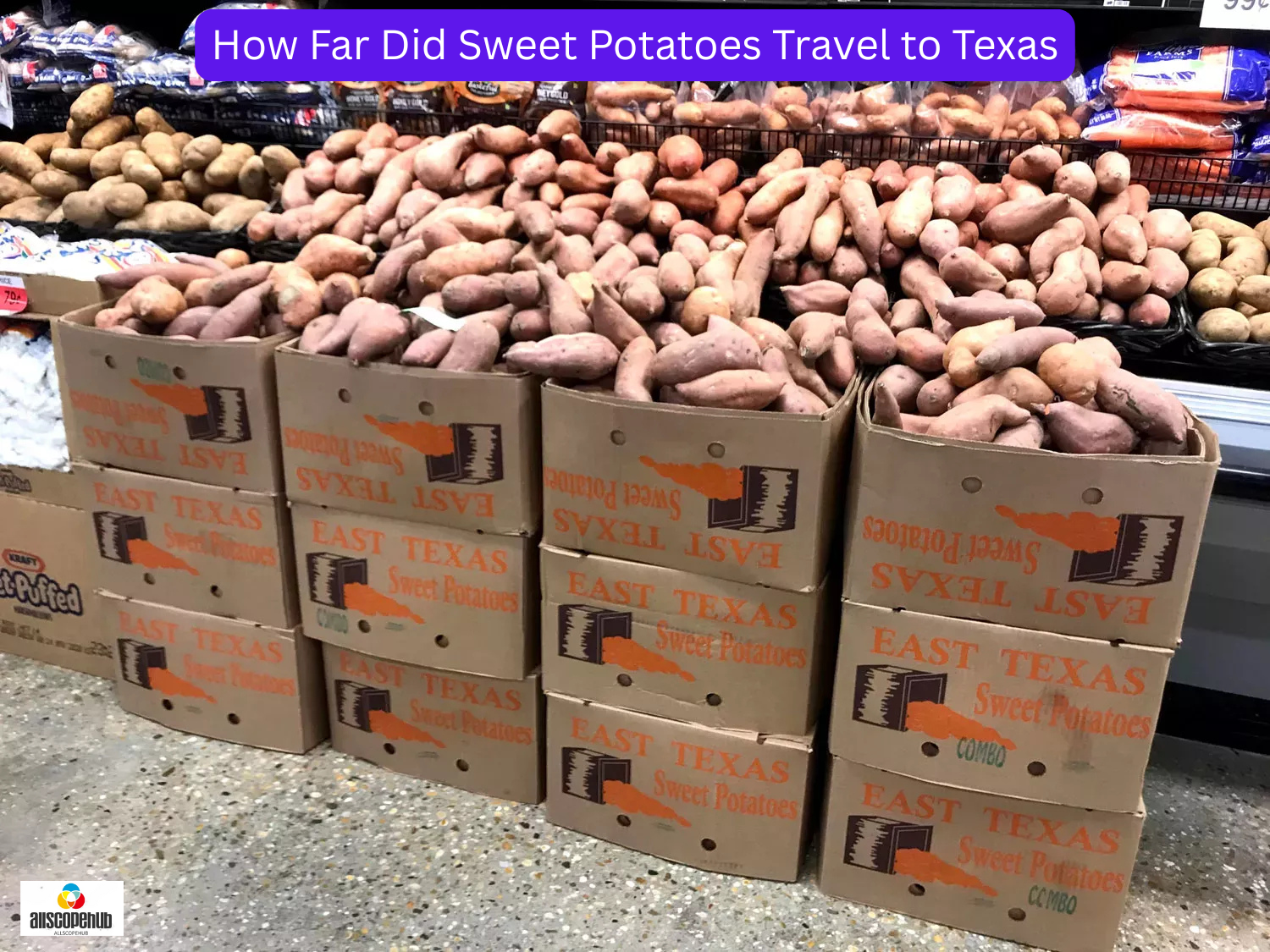The Sweet Potato Trail — From Ancient Origins to Texas Tables
We’ve all seen sweet potatoes on the dinner table—baked, mashed, or fried into chips. But have you ever wondered just how far they traveled to end up in Texas kitchens and fields?
We’re not just talking about miles here. This humble root vegetable has journeyed through thousands of years, across continents, and into the heart of Southern food culture. Its story is more than just a culinary tale—it’s one of survival, adaptation, and deep cultural roots.
How far did sweet potatoes travel to Texas? That’s the question we’ll explore. Along the way, you’ll discover fascinating facts about their origin, how they shaped diets and economies, and even how you can grow them in your Texas backyard. Ready for a rooted journey through time? Let’s dig in.
What Are Sweet Potatoes and Where Did They Originate?
To start, let’s clear up a common misconception. What are sweet potatoes exactly? Despite the name, they’re not related to white potatoes. They’re also often confused with yams, entirely different plants from West Africa. Sweet potatoes belong to the Morning Glory family and come in orange, purple, and white colors.
Sweet potatoes have been around for more than 5,000 years. Their roots trace back to Central or South America—most likely modern-day Peru, where archaeological digs have uncovered remains from ancient civilizations. These weren’t just food but part of rituals and daily life.
And here’s something wild: long before European explorers arrived, Polynesian sailors may have carried sweet potatoes across the Pacific. That’s thousands of miles across the open ocean—proof of the crop’s toughness and early global journey. This NPR article explores the genetic evidence supporting this remarkable trans-oceanic voyage.
How Far Did Sweet Potatoes Travel to Texas? The Historical and Agricultural Journey
So, how far did sweet potatoes travel to Texas? Quite a long way.
After thriving in Central and South America, sweet potatoes went north. Spanish explorers brought them to the Caribbean in the 15th century, and from there, they spread into the southeastern parts of North America. Native American tribes like Georgia, the Carolinas, and Alabama adopted the crop quickly, incorporating it into traditional meals and farming systems.
As settlers moved westward, sweet potatoes came with them. Eventually, they reached Texas—first in the eastern regions where the climate and soil were just right. Over time, Texas farmers began cultivating them more intentionally, adapting growing methods to suit the state’s varied climates.
Today, sweet potatoes are part of the agricultural backbone in parts of East Texas. They’re not just grown—they’re celebrated, cooked, and passed down through generations. Their journey wasn’t a straight line, but their presence in Texas was strong and steady.
The USDA’s Sweet Potato Profile provides excellent insights into sweet potato production in the U.S., including Texas’s role in national output.
5 Surprising Facts About Sweet Potatoes in Texas
You might think sweet potatoes are the same everywhere—but Texas puts its twist on things. Here are five things you probably didn’t know:
- Texas’s sandy loam soil is perfect for growing sweet potatoes. It’s loose and well-drained, which helps the roots grow large and lovely.
- The long growing season in Texas makes sweet potatoes even sweeter. More sun and warm days give them time to develop a richer flavor.
- East Texas farmers grow thousands of acres of sweet potatoes each year. It’s a big deal in counties like Van Zandt and Smith.
- Sweet potatoes are a festival favorite. From county fairs to farmers markets, you’ll find roasted sweet potato fries, casseroles, and pies at almost every Texas food event.
- They support rural economies. Many small farms depend on sweet potato sales for seasonal income—and more people are buying locally than ever.
So, next time you see a sweet potato at your local store or market, there’s a good chance it was grown right here in Texas.
How to Grow Sweet Potatoes in Texas: A Quick Gardening Guide
Interested in getting your hands dirty? Here’s what you need to know about growing sweet potatoes in Texas.
When to plant: The best time to plant is between April and June. This depends on your region—warmer areas can start earlier.
Soil type: Sweet potatoes need loose, sandy, and well-drained soil. Hard clay or rocky ground can stunt their growth.
Spacing and care: Space plants 12–18 inches apart in rows about 3 feet apart. Water them regularly, but don’t overdo it—too much moisture can cause rot.
Best regions in Texas: East Texas is the sweet spot thanks to its warm climate and soil. But with some tweaks, you can grow them in Central or South Texas, too.
Pest tips: Keep an eye out for wireworms and weevils. Use organic pest control like neem oil or crop rotation to keep bugs in check.
Growing sweet potatoes is more than doable in Texas—it can be a fun backyard project or a full-on farming venture.
Why Sweet Potatoes Became a Texas Staple in Homes and Farms
So now you’re probably wondering why sweet potatoes became a Texas staple.
First off, they’re packed with nutrition. They’re rich in vitamin A, fiber, and antioxidants, making them one of the healthiest carbs. Whether you feed a family or manage a farm, that’s a significant win.
Then there’s their flexibility in the kitchen. Sweet potatoes appear in pies during the holidays, fries on diner plates, and even mashed into Tex-Mex-style tortillas. You’ll also find them in soul food traditions—deeply rooted in African-American heritage throughout the South.
They also last. Their long shelf life is ideal for storage, transport, and off-season cooking. In farming, that’s gold.
Finally, they’ve gotten a boost from government programs and local agriculture groups. These initiatives support farmers, encourage school gardens, and keep traditional crops like sweet potatoes thriving in modern Texas life.
In short, they check all the boxes: healthy, easy to cook, culturally significant, and good for local economies.
From Ancient Fields to Texas Farms—The Legacy of a Resilient Root
Looking back at the whole story, it’s hard not to be impressed.
From ancient fields in Peru to backyard gardens and busy farms in East Texas, sweet potatoes have traveled a long, winding path. They crossed oceans, changed hands through cultures, and adapted to new lands and climates.
Now, they’re more than a holiday dish. They’re part of Texas’s food identity—woven into family recipes, small businesses, and home gardens.
We’ve shared how far sweet potatoes traveled, how they grow in Texas, and why they matter to our communities. So what’s next?
Here’s What You Can Do Now:
- Try growing sweet potatoes in your backyard. It’s easier than you think and great for beginners.
- Support local farmers. Visit a Texas farmer’s market and buy fresh, homegrown sweet potatoes.
- Cook something new. Explore sweet potato recipes that reflect Texas culture—a spicy hash or a smooth pie.
Understanding where your food comes from matters. Sweet potatoes didn’t just arrive on your plate—they took a journey through history, culture, and hard work to get there.
Now, it’s your turn to be part of their story.



